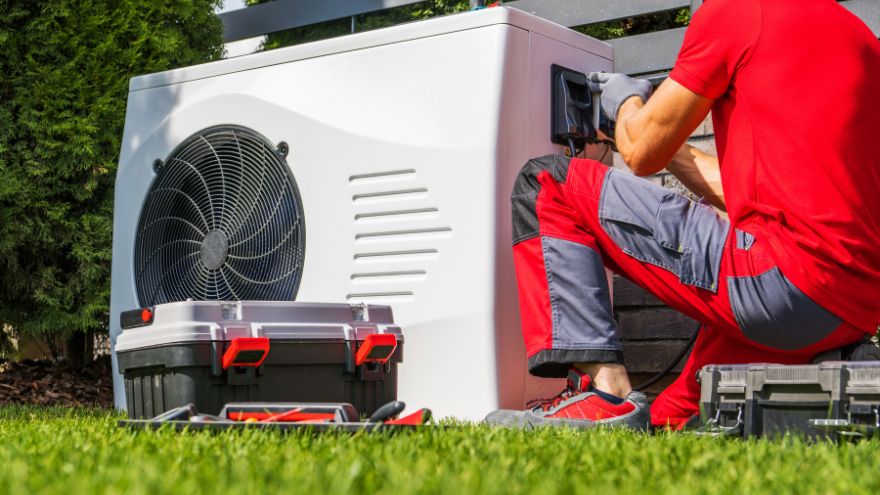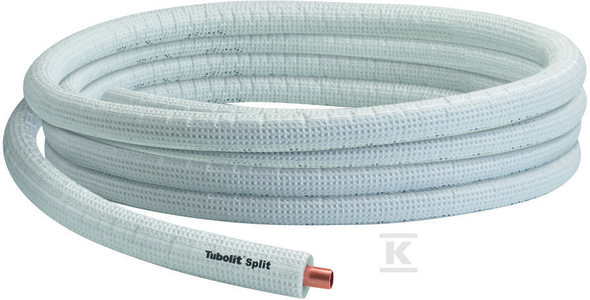Heat pumps enjoy unflagging popularity, and one of the greatest advantages is the ability to reduce emissions of carbon dioxide and other greenhouse gases into the atmosphere. An additional advantage is the ability to heat domestic hot water at home, which increases savings. However, for the whole thing to be effective and fulfill its purpose, the entire installation must be performed correctly.

Check the heat pump pipes at the Onninen wholesaler
Do you need to insulate heat pump pipes?
Pipes, next to radiators, are installation elements that are important heat carriers. When heated, the water in the pipes releases heat into the room. If the installation is also located in unheated rooms, the so-called heat loss. In practice, they are very important and their reduction can often save a lot. In such places (e.g. unheated basements), the best solution is to use an appropriate insulation option. It allows you to protect the pipes and thus protect the energy that is then used to heat living spaces or utility water.
How long should a heat pump pipe be?
 The efficiency of a heat pump installation depends on many factors. The method of laying and the length of the pipes are also important. The main unit, although there are no detailed guidelines as to the installation location, is most often placed approximately 30 cm from the external wall of the building, although when deciding on a specific solution, check the manufacturers' guidelines. For most currently available models, this distance usually does not exceed 1.5 m.
The efficiency of a heat pump installation depends on many factors. The method of laying and the length of the pipes are also important. The main unit, although there are no detailed guidelines as to the installation location, is most often placed approximately 30 cm from the external wall of the building, although when deciding on a specific solution, check the manufacturers' guidelines. For most currently available models, this distance usually does not exceed 1.5 m.
The distance between the external and internal units cannot usually exceed 10-25 m horizontally and 3-5 m vertically. The heat pump pipe connecting the devices should not exceed 20-30 m in accordance with the manufacturers' recommendations, although the optimal solution is 7-8 m in length . Larger distances between units require replenishing the medium. It is assumed that 40g/m should be reached. However, please remember that the maximum length of the refrigeration pipeline in one direction cannot exceed 12-15 m.
How to connect pipes to a heat pump?
The heat pump should always be selected depending on the energy needs of a given building, the specificity of the installation, etc. The thermal energy generated in this way can be used effectively if the entire pipe system and installation are properly designed and constructed. The diameters of the heat pump pipes are selected depending on the power of the device. It is assumed that for standard parameters of 5-12 kW, the diameter of the pipes in the installation should be no less than 1". Some manufacturers even recommend installing elements with a diameter of no less than 1 ¼".
Another issue to pay attention to is the type of pipes used, because the flow resistance of copper and PE pipes is different. Improperly selected pipes pose a big problem. As a result, the nominal flow in the heat pump will not be achieved and the device will not obtain adequate heating power, which will certainly increase electricity bills. Properly matched heat pump pipes allow you to ensure thermal comfort in your home.
Check the heat pump pipes at the Onninen wholesaler
How to protect heat pump pipes against losses?
Heat loss is a serious problem, so care must be taken to eliminate it. Only then will the heat pump's heating circuits be effective. One of the most popular solutions that have been used for years is mineral wool. Its advantage is not only excellent insulation, but also resistance to moisture. Thanks to this, it is successfully used to protect water pipes.
An alternative solution is polyurethane foam. It is perfect for pipe insulation due to its low thermal conductivity coefficient. Foam is a good solution when the installation length is longer. The advantages important for installers include ease of use - it is easy to install and flexible, thanks to which it perfectly adapts to any shape.
Heat pump pipes in the Onninen wholesaler
Please remember that the basis is the selection of the appropriate device and installation elements. The heat pump is available in many variants, differing in performance and heating efficiency.
The Onninen installation wholesaler 's offer includes a wide selection of copper pipes dedicated to heat pumps. All products are prepared by manufacturers who have extensive experience in the industry and specialize in providing ready-made, professional and solid solutions.
 One example is the Armacell Tubolit split ¼" copper pipe . The whole, available in the form of a 25 m long coil, is packed in a cardboard box, so the risk of damage during storage, packaging or transport is low. A big advantage is that it is pre-insulated This means that the copper pipe is covered with a special layer of plastic, which allows it to remain highly flexible, making it easier to install and adapt individual elements to existing obstacles.
One example is the Armacell Tubolit split ¼" copper pipe . The whole, available in the form of a 25 m long coil, is packed in a cardboard box, so the risk of damage during storage, packaging or transport is low. A big advantage is that it is pre-insulated This means that the copper pipe is covered with a special layer of plastic, which allows it to remain highly flexible, making it easier to install and adapt individual elements to existing obstacles.
The second, equally important issue is that the insulation layer allows you to significantly reduce possible heat losses. Thanks to this, the optimal efficiency of the installation is maintained, which actually translates into minimizing heating costs. The Tubolit pipe also has an appropriate fire classification certificate, which allows assessing the product's safety level. These parameters only characterize the behavior of the selected material if it were exposed to fire. The solutions available in our offer also have the NRO certificate, which indicates the degree of fire resistance.
For people looking for other pipe diameters, solutions have been prepared, such as the Armacell Tubolit split SE ½” copper pipe . Its diameter is 12.7 mm and the wall thickness is 1 mm. The product is available in a roll, with a total length of 50 m. It is perfect for, among others: for connecting the external and internal heat pump units in Split and Multisplit devices. The seamless copper pipe has appropriate certificates confirming its quality and compliance with applicable standards.